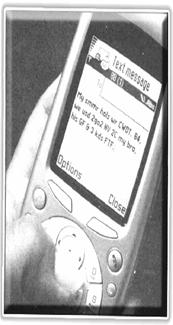题目内容
New York Times-The already crazed competition for admission to the nation’s most famous universities and colleges became even more intense (激烈的) this year, with many recording the lowest acceptance rates.
Harvard College, for example, offered admission to only 7.1 percent of the 27,462 high school seniors who applied — or, put another way, it rejected 93 of every 100 applicants, many with extraordinary achievements, like a perfect score on one of the SAT exams. Yale College accepted 8.3 percent of its 22,813 applicants. Both rates were records.
Columbia College admitted 8.7 percent of its applicants, Brown University and Dartmouth College about 13 percent, and Bowdoin College and Georgetown University 18 percent — also records.
“We love the people we admitted, but we also love a very large number of the people who we were not able to admit,” said William R. Fitzsimmons, dean (主任) of admissions and financial aid at Harvard College.
Some colleges said they placed more students on their waiting lists than in recent years, in part because of uncertainty over how many admitted students would decide to enroll (登记入学). Harvard and Princeton stopped accepting students through early admission this academic year; that meant that more than 1,500 students who would have been admitted in December were likely to have applied to many famous schools in the regular round.
Many factors contributed to the tightening of the competition at the most selective colleges, admissions deans said. The number of high school graduates in the nation has grown each year over the last decade and a half, experts estimate that the figure will reach the highest point this year or next, which might reduce the competition a little.
Other factors were the ease of online applications, expanded financial aid packages, an ambitious students’ applying to ever more colleges.
1.What’s the passage mainly about?
A.Harvard has the lowest admission rate this year.
B.Many factors have led to the intense competition.
C.Famous universities prefer to have more students on their waiting lists.
D.Admission to famous universities became even more difficult this year.
2.Which of the following has the highest acceptance rate this year?
A.Yale College. B.Georgetown University.
C.Columbia College. D.Dartmouth College.
3.How many of the 20,000 applicants would be rejected by Columbia College this year?
A.18,260 B.1,740 C.18,350 D.1,950
小题1:D
小题2:B
小题3:A
略

练习册系列答案
 开心快乐假期作业暑假作业西安出版社系列答案
开心快乐假期作业暑假作业西安出版社系列答案 名题训练系列答案
名题训练系列答案
相关题目
 , so Junelle can empty her bag when it becomes heavy. Isabella always accompanies(陪伴) her daughter.
, so Junelle can empty her bag when it becomes heavy. Isabella always accompanies(陪伴) her daughter.
 mal friends had smaller change in blood pressure and returned most quickly to baseline heart rates. With pets in the room, people also made fewer math mistakes than when doing in front of other companions. It seems people feel more relaxed (放松)around pets, says Allen, who thinks it may be because pets don't judge.
mal friends had smaller change in blood pressure and returned most quickly to baseline heart rates. With pets in the room, people also made fewer math mistakes than when doing in front of other companions. It seems people feel more relaxed (放松)around pets, says Allen, who thinks it may be because pets don't judge.